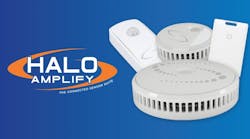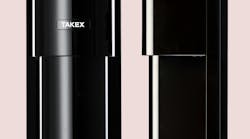2012 will be remembered as the pivotal year for home security. A perfect storm of technology, investment and new entrants have now changed the market landscape forever. SaaS, ubiquitous broadband and smart phones have finally colluded to make home video surveillance a cheap and viable solution.
Vivint was sold to The Blackstone Group for more than $2 billion and ADT in North America was spun off from Tyco International. Of course everyone now recognizes that the big play here is not just security but home automation; offering numerous services with little extra "cost per user" required by virtue of SaaS and cloud computing.
This is the opportunity that has got markets and investors excited. ADT is currently trading on the New York Stock Exchange, 25 percent up on their Oct. 1 debut (as of 12/19/2012). But for all the hyperbole and talk of doubling residential penetration, have the "big boys" really embraced the revolution? Or have they left the door open for smaller more innovative companies to gain a foothold?
Mark Richards of Hive Labs certainly thinks so. "Our vision is that everyone should have home security and not at $30, $40 or $50 USD per month... the alarm companies’ business models are still exactly the same as they ever were and it won’t last forever," says Richards. "Long term contracts, not being open and honest with pricing and sales folk knocking on doors is from another era."
Richards puts forward a persuasive argument; almost all the smaller companies entering the market have a background in software. They understand it. Technologies such as web services, cloud, agile programming techniques, and third-party API’s enable companies like Hive to offer video surveillance services for $5 per month with no contract.
"It’s services like Hive that have a shot at growing the U.S. market to 40 percent penetration not the incumbents," Richards explained.
It is perhaps worth taking a step back and considering the example of the current kings of consumer electronics, Apple Inc., which combines beautiful industrial design with intuitive software. Its' hardware and software are together in one ecosystem; an ecosystem that offers a completely seamless end-to-end experience for the user, but at the same time is tightly controlled for third-party developers.
Have major players in home security followed the Apple example? I would say no. According to ADT’s own figures, they have in the region of 6.7 million customers delivering $240 million per month of recurring revenue. So why choose to rebadge iControl for the ADT Pulse service? Why not invest in their own hardware and software ecosystem?
The camera offered by Hive is straight out of the Apple and Nest playbook. A small sphere of brushed metal and white plastic which sits comfortably in a magnetic housing and can be mounted anywhere in seconds. It is the product of over five years development and millions of dollars in investment. Its’ most important ingredient is a patented ultra-low power Wi-Fi chip which can provide over 1,000 triggered events (7,000 seconds of video) from just 2 AA batteries. It sells for $99.
Richards insists that "there is another way of doing home security... social." Hardware, web application and slick iPhone, iPad and Android apps combine to provide a platform for friends and family to share monitoring duties. An interesting idea for sure and one that will test exactly how far consumers attitudes have changed in this brave new Internet world and exactly what they expect from a security company.
In 2013, the U.S. home automation market is up for grabs. Winners will be the ones that can offer the seamless end-to-end experience that consumers have come to expect from the likes of Apple.




